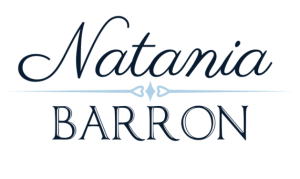1 – Ahoy! #threadtalk is sea bound–or at least a cozy room below–exploring the phenomenon of OUR FLAG MEANS DEATH & its revival of mens night-gowns, or banyans.🫖
This pinnacle of masculinity has a rich, wide, global history, full of intrigue. Away to Bonnet's banyans! #ofmd

2 – There is some disagreement about when exactly the banyan became a Western gentleman's fashion staple. We know influences from Japan & India coalesced in the late 17thC.
Between colonization & an obsession with "chinoiserie", by 1730, it was a fad. Matthew Prior (below) 1718.

3 – The word banyan (or banjan, or banian) has an interesting etymology, coming to English (it is posited) from the Tamil word vanigan, meaning trader or merchant.
In many parts of South Asia, the word banyan still refers to an undershirt.
Isaac Newton, here, early 1710s.

4 – What was the point of a banyan? It was a leisure garment, not for sleeping, but for doing more quiet activities before dressing for the day.
Due to the booming global trade (imperialism), gentlemen sought to display the most exotic $$$ designs. Below: 1710, the Netherlands.

5 – Bonnet's banyans make sense, even if a little early for the true banyan craze. A man of his means would know the value of peacocking around in finery. It was a statement of class.
In fact, it wasn't uncommon for nobles to be gifted in fabrics, like chintz. 👇 18th c below

6 – It's chintz that brings us to a very interesting parallel.
The East India Company was growing immensely during this time, heinous & greedy, their ships brimming w/expensive stuff. Not just fabric, but tea, opium, & gold & silver bullion.
Cue the pirates! 🏴☠️🦜

7 – Madagascar was a popular pirate hub, hosting near 1,000 pirates. And the colonies took note, with places like New York & Philadelphia trading with them to avoid imperial involvement and, uh, legal stuff.
Thus began a back & forth of Indian goods as well as enslaved Africans.

8 – In August of 1707, a pirate named John Halsey, captured two English ships with £50K of goods & $$. Defoe wrote of the pirate:
He was "…brave in Person, courteous to all his Prisoners, lived beloved, & died regretted by his own People."
(Methinks Defoe is wearing a banyan)

9 – Chintz, too, was frequently smuggled, as it was both desirable & shocking to European sensibilities (best combo!).
It was banned & women were attacked for wearing it. Not just b/c of the "pagan" designs but b/c it was a threat to local fabric industries. 👇early 18th C

10 – But it's not just India that influenced the banyan craze. Even earlier, in Denmark, the 'japonse rokken' became a hit in the 1680s–made of silk *and* chintz. Thousands were made and commissioned by the Dutch East India Company, like this one from the late 17th C, in silk.

11 – Here, construction is important. Susan North breaks down the changes between a 16c nightgown, 17th C kosode, a 1700 Indian nightgown, and a 1720 night-gown. You can see how there is no arm seam by the time we get to the end (D).

12 – And behold! Here is Stede Bonnet, flowing sleeves and a distinct lack of a shoulder seam. That yellow damask is absolutely spot on, too, as it is reminiscent of Spitalfields silk as well as many imports of the time period.

13 – In fact, behold this historical doppelgänger!
The description says it all: English. ca. 1700-1720. Gold silk damask (Chinese; ca. 1690-1720); lining: red brocaded silk (Persian; ca. 1700-1720); collar and cuffs: red silk damask (English; ca. 1700-1720); wool padding.

14 – Banyans were absolutely tools of the aristocracy, and a nod to imperialist & colonial tendencies.
But it's also a moment in time where Western masculine fashion really embraces luxurious patterns & fabrics in a remarkable way. Stede totally got that. 👇18th C gentleman.

15 – I mean, banyans remained popular really up until WWI. Even through Beau Brummell, Regency men still donned elaborate night-gowns at home.
Seem familiar? Check out this video of the 1995 Pride & Prejudice. What's our Mr. Darcy wearing at :40?
16 – I could go on, & it's a very deep, complex topic, but for now, I'd just like to admire some remarkable banyans. 😲
This one sold for $50K in 2009 at Christies, and is a repurposed Dragon Robe. Appropriation, much? The matching waistcoat is another level. ca. 18th C.

17 – Does this say Bonnet all over it? I daresay it does. One of my favorites, and featured in my chintz thread talk, from the V&A. I think what brings this over the top for me is the interior fabric. I am such a sucker for red chintz, too. 1750-75, Netherlands.
I mean, come ON.

18 – This was made in England 1720/50, but the silk dates from China, 1650-1700. Distinct Chinese influence.
But this SILK makes me HYPERVENTILATE. That lustre, after all this time? Just, how? It's clearly imbued with actual magic. I cannot even with the color. Sky blue?

19 – Here's an unusual one, made of Spitalfields silk. The pink lining is just charming, huh? Made of that T-shaped design we talked about, ca. 1760s. It also looks like the 1960s. Amazing how stuff just comes back around again, eh?
I would 100% spill my tea on this, though.

20 – Into the Romantic period, we go with my personal favorite of ALL TIME because it's TOILE DE NANTES. I mean, this is like, the most extra of extra. The fabric was usually reserved for furniture. But I love the shaping on this, and the dizzying pastoral. 11/10, Stede would.

21 – Speaking of extra, we'll round out our V&A examples with this sumptuous siren of a night gown. Double-breasted, jacquard, and with a yellow quilted lining. Hello, nurse! It's in the Frock Great Coat style, mirroring outdoor coats of the period. From 1850-70, England.

22 – We haven't had enough plaid, so let's welcome this entry from Colonial Williamsburg. Dates from the late 18th/early 19th century, and I think it's rather darling. I like the collar on this one, as well as the contrasting cuffs. Definitely one for Buttons on the show.

23 – Another saffron stunner, but this time with more tailoring befitting the era: this one is from 1780. It's Chinese Chippendale-inspired, and one heck of a statement. They were also called "Indian nightgowns" and by this period, they were sometimes worn outside.

24 – This is Ed's banyan. No I will not be taking questions. It's blue like the sea, like the kraken's eye, like the ink of an octopus…
Seriously, where's the fan?
I'd tackle anyone in this. Dates from 1760-1780, of exported Chinese silk. Quilted!

25 – I love how FLOWY this one is! More chintz, but you can see it paired with the waistcoat in a lovely way. It's cotton plain weave, but it looks so fancy! That was the thing about cotton prints that just made folks obsessed. From 1750, made in India for Western market.

26 – Of course, by the time we get to the late Victorian period, we've gone full smoking jacket. But this cousin deserves a little attention.
I can't get OVER the design on this. It's a patchwork magic jacket. Has to be owned by a Fae prince. Right? Silk, velvet, cotton. 1835.

27 – And because we didn't have enough green yet, this one from LACMA. I love the whole matching ensemble, again, and the patterning on the edges. Silk, 1720s, France. It's very French. Like, let's just make this even fancier, eh? So, Frenchie?

28 – And very lastly, this incredible *pink* delight. I think Stede would love this to bits, even if it was well past his lifespan. Dating from the mid-18th C, it's pink ribbed silk with brocaded design in silver frise thread. From FITNYC, of course. Just dandy in every way.

29 – I want to highlight a few sources before I dig down to the long list. First, this wonderful piece by Susan North, which goes into incredible detail regarding the influences behind banyans. If you want more info, this is where to go.
https://www.euppublishing.com/doi/pdfplus/10.3366/cost.2020.0142
30 – From the 18th Century notebook, this fabulous resource of SO MANY BANYANS, lovingly catalogued and annotated for your viewing pleasure.
http://www.larsdatter.com/18c/banyans.html
31 – This super cool article about piracy and the East India Company that almost delayed me from everything today, because it had so much nifty stuff in it.
32 – Now the rest of the sources!
https://www.indiatoday.in/education-today/gk-current-affairs/story/when-and-why-british-first-came-to-india-1591166-2019-08-24
https://www.jagranjosh.com/general-knowledge/when-and-why-british-first-landed-on-indian-territory-1504771870-1
https://www.jstor.org/stable/24583021?read-now=1&refreqid=excelsior%3A2f8371dec8187289fe5e447c8b545ae8&seq=1
https://www.bbc.com/culture/article/20200420-the-cutesy-fabric-that-was-banned
https://earlyamericanists.com/2018/09/13/in-touch-with-the-dutch-or-fashioning-colonial-new-yorks-merchant-elite/
https://www.geriwalton.com/banyans-garments-that-18th-century-gentlemen-loved/
https://www.metmuseum.org/art/collection/search/87231
https://en.wikipedia.org/wiki/Banyan_(clothing)
https://twonerdyhistorygirls.blogspot.com/2010/06/gentlemen-at-leisure-banyans.html
33 – More sources! https://twitter.com/softbred/status/1507716215644778500
https://variety.com/2022/artisans/news/our-flag-means-death-production-design-ra-vincent-1235254416/
34 – Thanks for reading tonight, and thanks to my patrons for helping vote on this month's topic. You can vote, too! My patreon is http://patreon.com/nataniabooks — and I post extra #threadtalk exclusive content there after every thread! (Also have a tip jar.)
35 – I, personally, would love to see more banyans in the future.
Would pay to see Jim and Oluwande so accoutered. Just saying, show runners. I think it's time that Stede shares his spoils a bit more.

Originally tweeted by Natania Barron (@NataniaBarron) on May 16, 2022.











